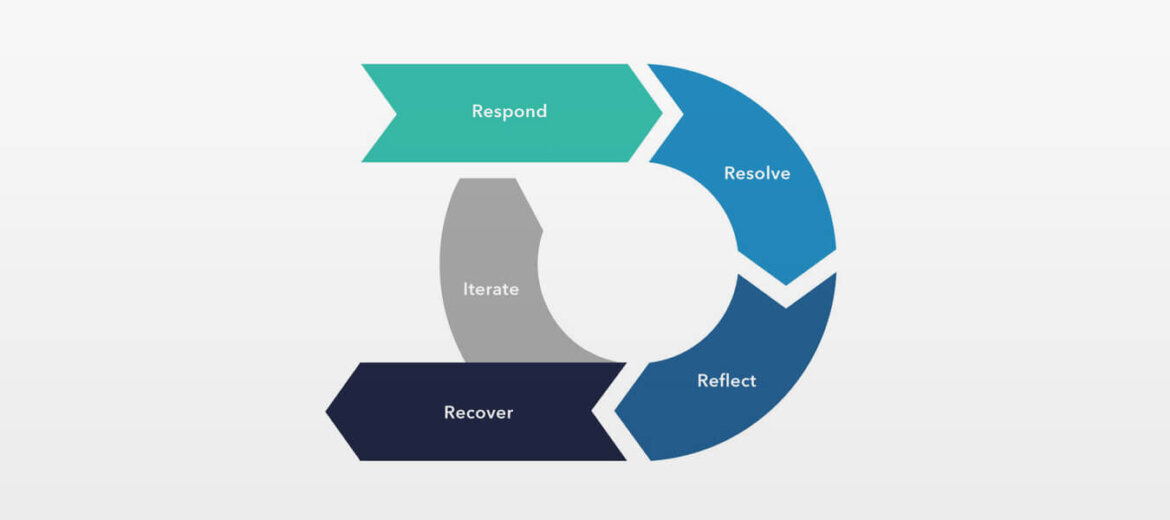Come see us.
Precocity LLC3400 N. Central Expressway, Suite 100
Richardson, TX 75080
info@precocityllc.com
(972)-378-1030

Failure isn’t the first thing anyone wants to consider when working on a project, but it definitely isn’t the last thing your team should think about either. Failure can be an important tool for teams, it provides opportunities to innovate, and can lead to the discovery of solutions that otherwise might not have been apparent or possible beforehand. This is especially true when dealing in technology initiatives, as they frequently require significant amounts of experimentation and as any good scientist would attest, not all experiments succeed.
In this post, we share a few strategies we use to ensure that a good failure never goes to waste, along with a few recommendations to help you do the same with your team.
Positive failure is a concept that has been explored in countless articles and books about startups, Silicon Valley majors, and tech luminaries. Writers cite the famous mantras that serve as the tech elite’s guiding principles: “Fail Fast, Fail Often”, “Fail Forward”, “Fail Better”, and so on and go on to explain how learning from the failures of their early years led to their later success. What we don’t often get from the chronicles of disruptors is an understanding of what exactly makes failure positive, but here are a few common elements to help you recognize a “good” failure:
If you have noticed that your team or organization struggles with or has outcomes counter to the points above, you might have to undergo a cultural transformation to address problems that stem from systematic rejection or persecution of failure.
After you understand how to recognize positive failure, the next step is to understand how to foster a culture that embraces failing the right way in your organization. This is one of the most difficult transformations to accomplish, especially in larger organizations. This is due to the heightened potential impacts of failure, and because a majority of the organization is outside of the immediate circle of a project, which makes it difficult to understand in fullness what led to the failure and what was done to recover.
If you decide to undergo this transformation, we offer the following do’s and don’ts as a guide to help your team start the change:
These principles will help you to kick start your culture of experimentation and will ensure that your team is positioned to overcome challenges in their day-to-day work and on large-scale initiatives.
Now that we understand how to identify positive failure and can start to foster a culture that looks at failure the right way, we can discuss tactical methods for handling failure when it happens. In our experience, to properly address issues you should follow the four R’s: Respond, Resolve, Reflect, and Recover. These stages can be executed in a repeated cycle depending on your situation and are likely to require some amount of iteration to completely address issues.
Take action to acknowledge and mitigate the issue(s) the moment they are identified, communicate what has occurred and what is being done initially to respond to the issue.
Devise a plan and put it into action as quickly as possible without being strictly reactive, address immediate problems first to give your team time to tackle more broad or difficult ones.
Take a retrospective look at what led to the failure and how you and your team addressed the issue, use this period to focus on areas for improvement (process, tools, communication, decision making, etc.). You should always exit a crisis with a concise understanding of what took place and how things ended up in that situation.
Once your team is out of the cycle of mitigating a specific situation, spend time addressing the “environmental” elements that led to the failure and make adjustments that ensure that your team won’t fail the same way twice.
Beyond the above recommendations, here are a few miscellaneous tips to help your team prevent project pitfalls and fantastic failures:
Have a project that could use some help overcoming an especially difficult challenge? Have a team that could use some support through expertise and technical guidance? Reach out to us so we can set up a call to discuss your organization’s needs.